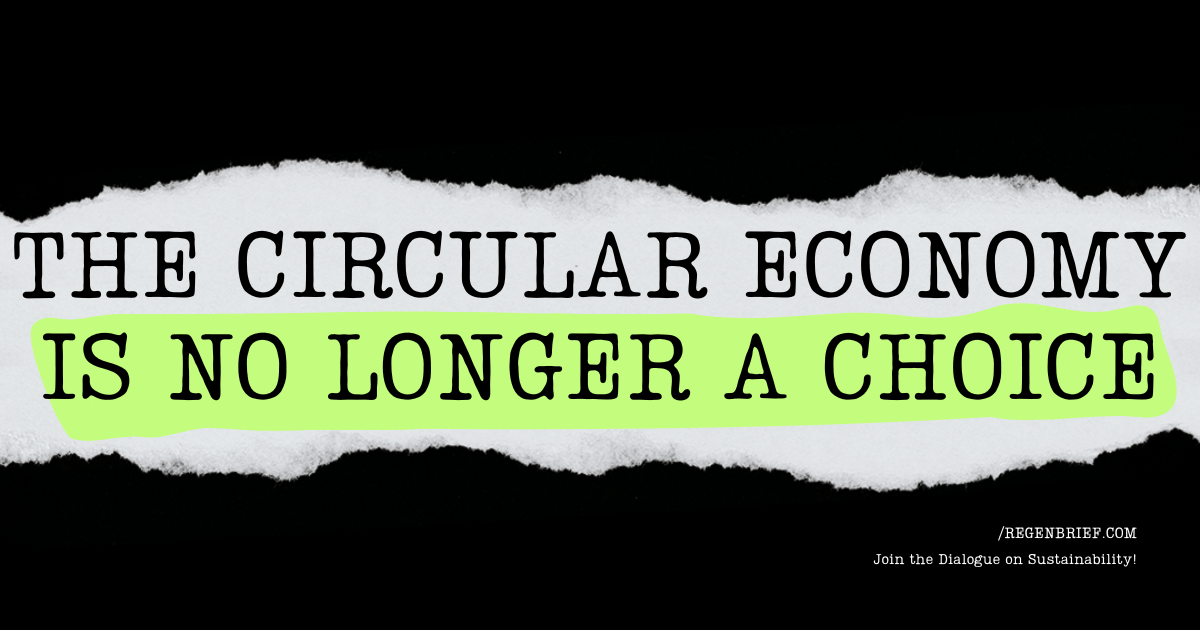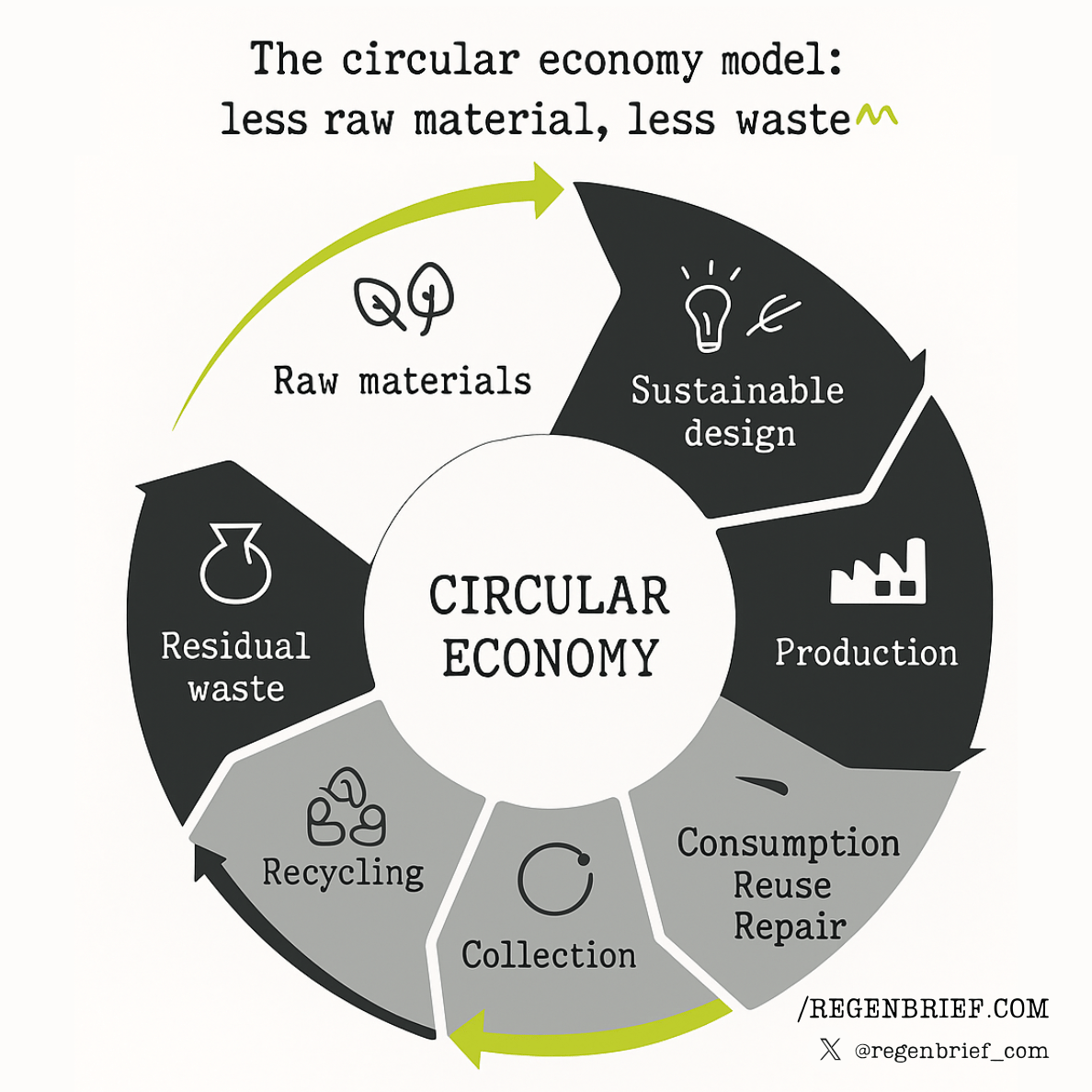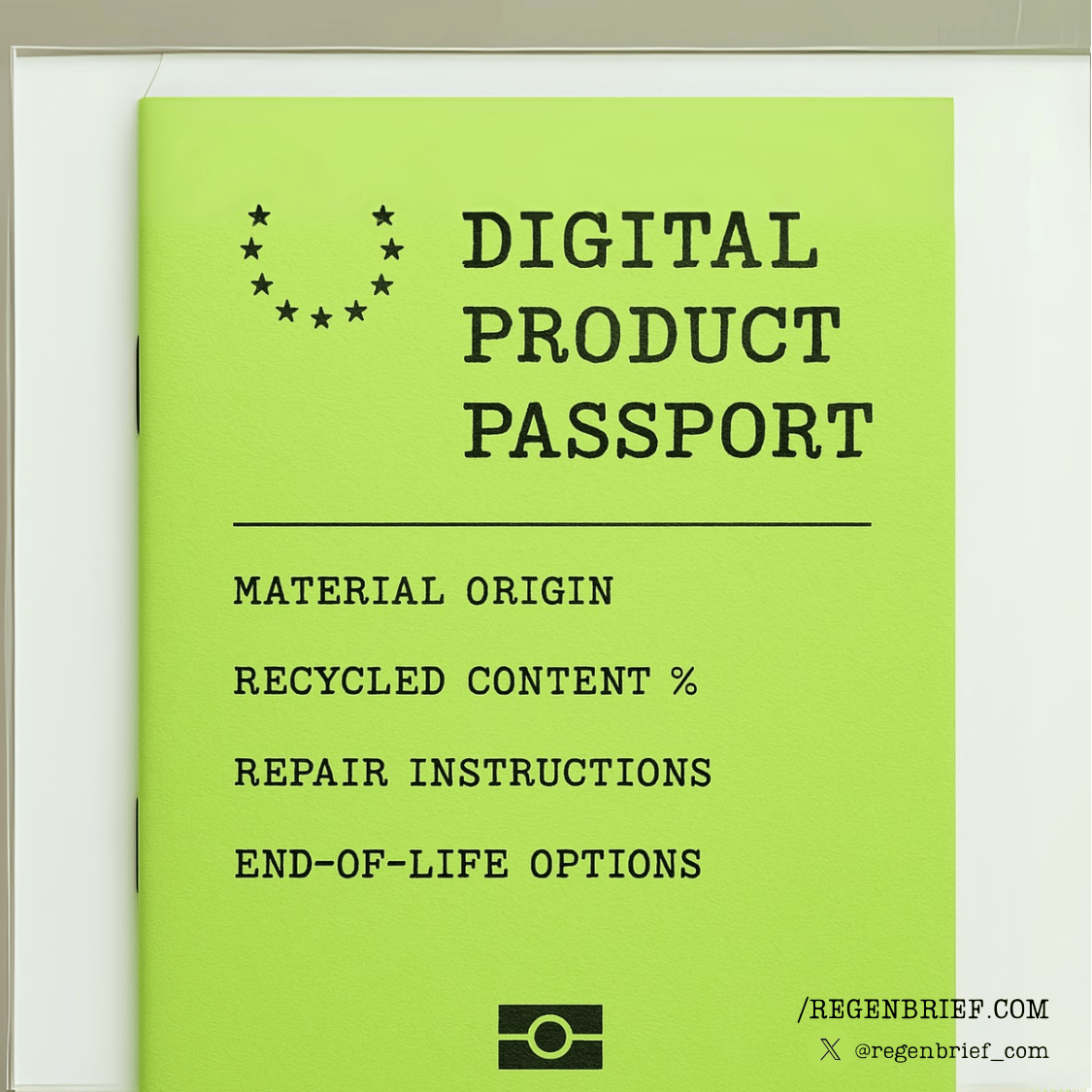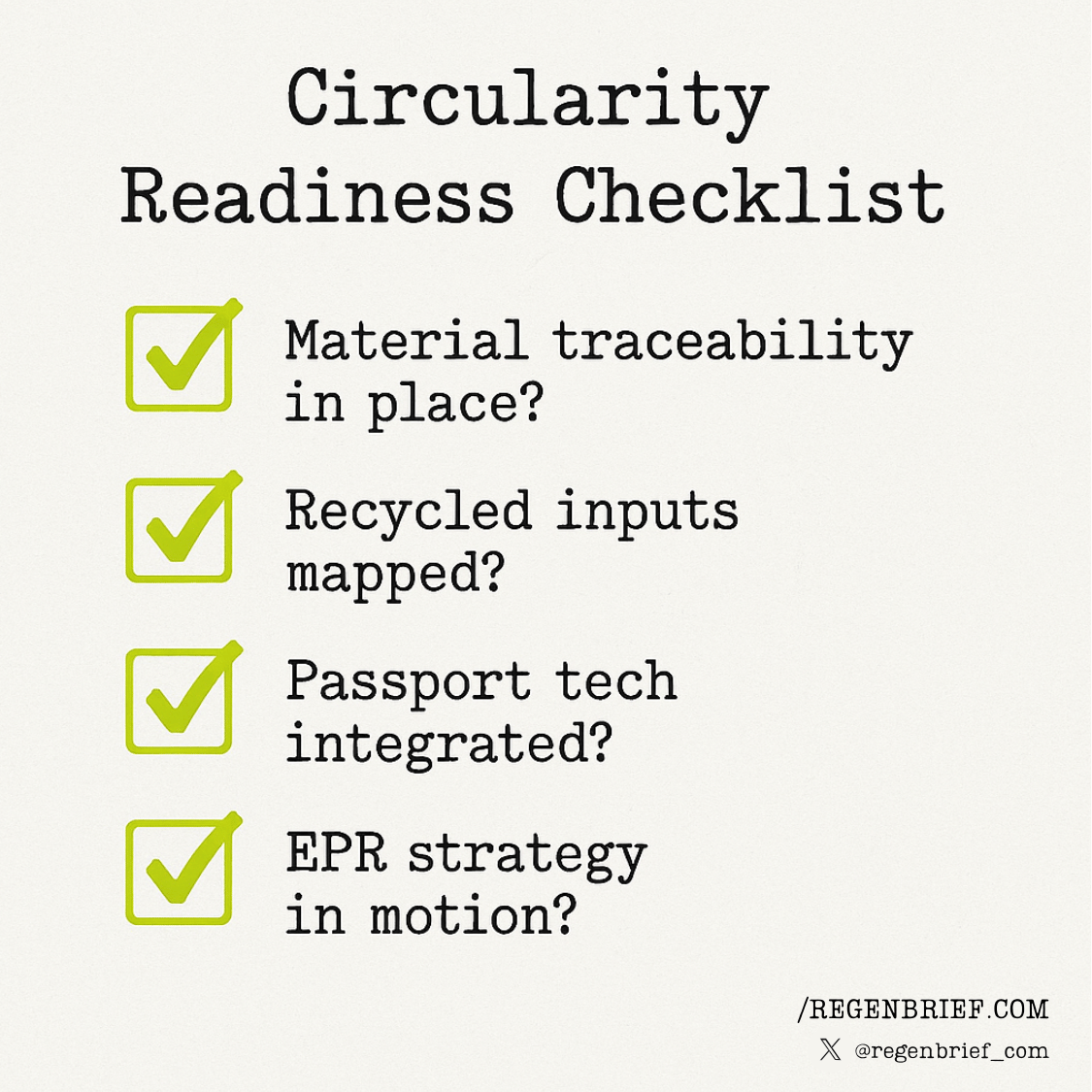- The Regenerative Brief
- Posts
- The Circular Economy Is No Longer a Choice
The Circular Economy Is No Longer a Choice
Europe is making circular design, recycled materials, and product transparency the law. Here’s what it means for business.

“We cannot build a competitive Europe if we continue to throw away resources.”
— Ursula von der Leyen, President of the European Commission, July 2025
Dear RegenBrief reader,
For years, the circular economy has been everywhere — in strategies, reports, and marketing campaigns.
Recycle more. Design better. Waste less.
But here’s the uncomfortable truth:
Despite the talk, global resource consumption hit a record of more than 100 billion tons per year, and only 7.2% of those materials flow back into the economy.
That figure is falling — not rising.
The circular economy was always meant to be more than ambition.
Now, for Europe at least, it’s becoming the law.

The circular economy flows through key stages—from design to recycling
At EU Green Week 2025, Brussels confirmed what many anticipated:
The proposed EU Circular Economy Act will shift from policy proposal to binding legislation, with a rollout timeline beginning in 2026.
Here’s what’s coming:
↳ Mandatory recycled content for key products (textiles, electronics, packaging, more)
↳ Durability and repair standards to extend product life
↳ Digital Product Passports, making material origins and recycling pathways transparent
↳ Extended Producer Responsibility (EPR) — companies are accountable for products from production to disposal
↳ Bans on destroying unsold goods, targeting fast fashion, and electronics waste
For businesses, circularity will no longer be a marketing badge — it will be a legal requirement.

⚡ Why This Changes the Global Game
Europe is often the regulatory front-runner.
What happens in Brussels rarely stays in Brussels.
Here’s the context:
↳ Global material use has doubled since 2000, exceeding 100 billion tons per year, according to the Circle Economy Foundation's 2024 Circularity Gap Report
↳ Only 7.2% of materials are cycled back, down from 9.1% in 2018
↳ Critical sectors — construction, electronics, fashion — drive unprecedented demand for virgin resources
↳ The EU’s Green Deal Industrial Plan explicitly ties competitiveness to circularity
Simply put, voluntary measures haven’t closed the loop fast enough.
Europe's new rules mark a decisive shift — from ambition to enforcement.
👀 Who Hits First
The impact starts with high-consumption, high-waste sectors:
Fashion:
EPR schemes and collection targets
Eco-design for durability and recyclability
Ban on destroying unsold stock
Electronics:
Material passports and traceability
Repairability and recyclability requirements
Mandatory recycled content
Construction:
Requirements for recycled material use
Stricter certification for circular performance
The global supply chain ripple is inevitable:
If you want access to the EU market, you’ll need to comply.
What Forward-Thinking Companies Are Doing Now
The smart ones aren’t waiting for 2026.
They’re already:
↳ Mapping material flows and product life cycles
↳ Investing in recycled material supply chains
↳ Preparing for product passport systems
↳ Rethinking product design for longevity
↳ Collaborating with SMEs to ensure compliance
In short, they’re treating circularity not as a hurdle, but as an opportunity to build resilience and market leadership.
Final Word — The Circular Economy Just Got Teeth
Europe’s message is clear:
Circularity isn’t just good PR — it’s core to economic competitiveness, resource security, and climate goals.
This is more than recycling.
It’s a systems redesign, and the rules are arriving.
For those who adapt early?
Opportunity.
For those who delay?
Exclusion from key markets, supply chain disruption, and lost relevance.
Signals to Watch
EU Circular Economy Act Draft Publication (Q4 2025)
The full legislative text is expected later this year. Watch for details on product categories, recycled content quotas, and enforcement mechanisms.Expansion of Digital Product Passports (2026)
Beyond electronics and textiles, the EU aims to apply product passports to construction materials and furniture — reshaping traceability requirements.Fast Fashion Crackdown Accelerates
Brands operating in Europe face growing restrictions on unsold stock destruction and mandatory collection schemes. Expect legal action against non-compliant companies.Global Policy Copycats Emerging
Early signals from Canada and South Korea suggest similar circular economy mandates may follow — reinforcing the global shift from voluntary to compulsory measures.Corporate Circularity Reports Under Scrutiny
With regulation rising, expect NGOs and watchdogs to increase pressure on companies making unsubstantiated circularity claims — greenwashing risks are climbing.

Let Us Help You Lead the Shift
Whether you're in strategy, ESG reporting, operations or innovation— |
Curious where regeneration fits into your model? |
This is more than sustainability. |